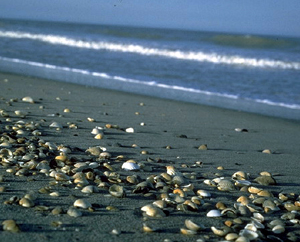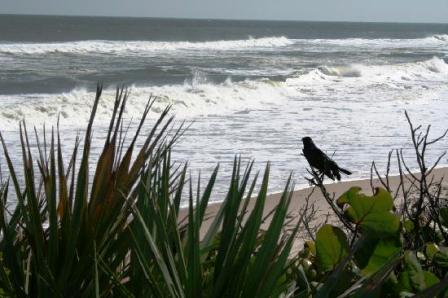Florida Nature: Canaveral National Seashore
The Canaveral National Seashore and the Merritt Island Wildlife Refuge are
located midway on Florida’s east coast between Daytona Beach and
Melbourne. The history of Merritt Island extends from prehistoric times
to the space age! Inhabited by Indians since about 7000 B.C., the island
in recent years has rocketed to the site of Cape Canaveral, with which
the refuge and seashore share a border. The National Park Service
protects ten National Seashores in the United States. Canaveral National
Seashore is a step into the past, protection for the present, and a
doorway into the future. The 100
Timucuan Mounds that are
within it's boundaries are evidence of past generations of people that
lived here. Canaveral National Seashore covers 57,000 acres and the 24
mile stretch of undeveloped beach is the longest stretch on Florida's
east coast. Fourteen endangered species make their home within
Canaveral's boundaries. Kennedy Space Center owns the land that is
managed by the National Park Service and Merritt Island National
Wildlife Refuge. Joint efforts of three agencies protect it from
development and preserve the history, the wildlife and the diverse
habitats.
The
Wildlife refuge can be explored by car along two nature drives or by
foot via two short hiking trails. Either way the range of wildlife is
stunning. Many of the 250 bird species that have been observed here make
their nests on the refuge, including
great blue herons, snowy egrets,
turkey vultures, pi-billed grebes and the
rare black skimmers.
The refuge is also home to nineteen endangered species, most notably the southern bald eagle and the brown pelican. Porpoises, manatees, and whales are occasionally glimpsed offshore. Canaveral National Seashore serves as an important nesting area for sea turtles.
The refuge is also home to nineteen endangered species, most notably the southern bald eagle and the brown pelican. Porpoises, manatees, and whales are occasionally glimpsed offshore. Canaveral National Seashore serves as an important nesting area for sea turtles.



Comments
Post a Comment